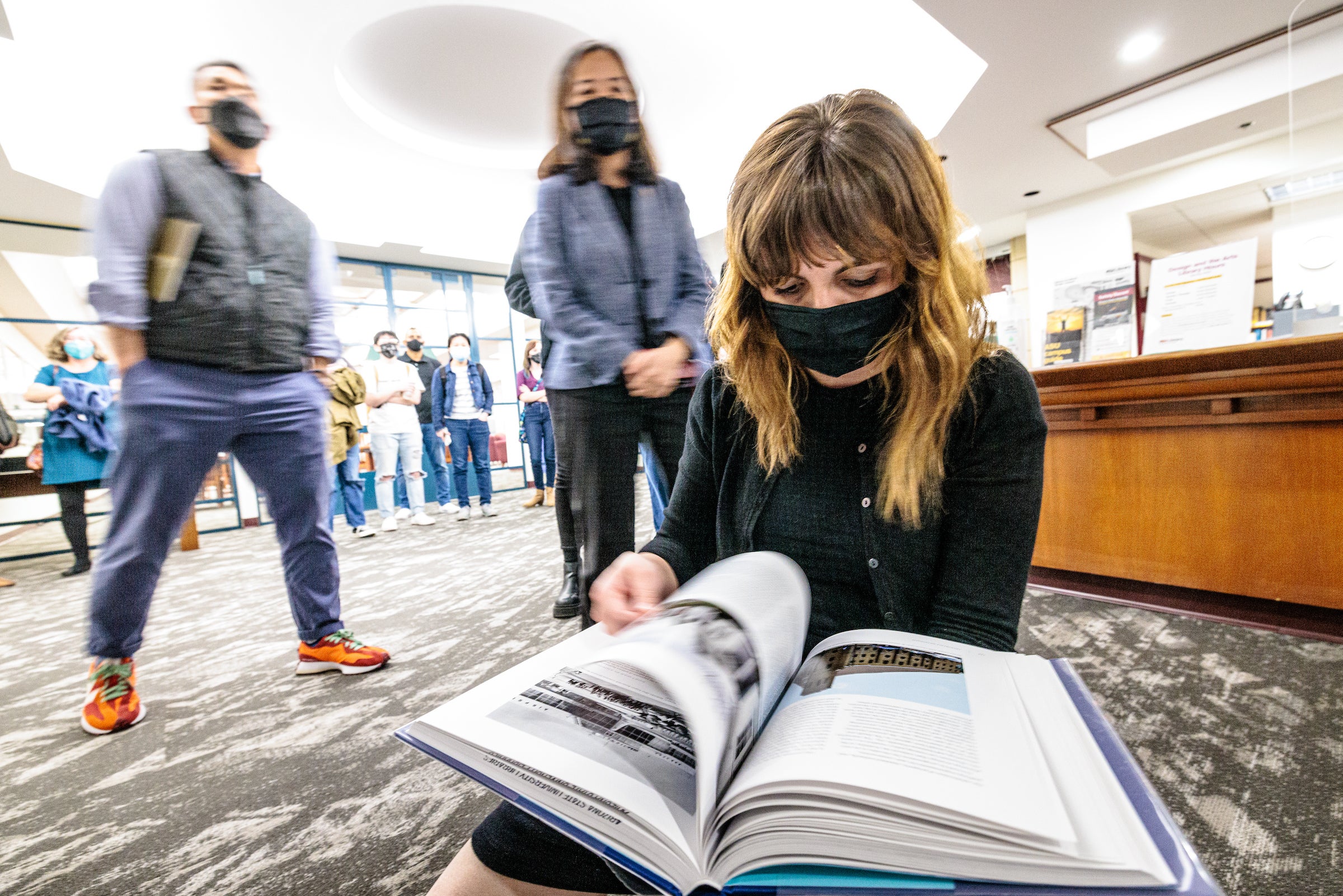As the country’s attention turned toward issues of social justice during the summer of 2020, a group of students in the Herberger Institute for Design and the Arts at Arizona State University wanted anti-racism efforts from their own school.
The students founded the Design Justice Initiative that year and drafted a letter that asked the Herberger Institute to take 14 specific actions, such as including more BIPOCAcronym that stands for Black, Indigenous and people of color., women and LGBTQ+ voices in coursework, hiring more BIPOC faculty, mandating diversity and inclusion training and adopting a more inclusive and healthier review and studio culture.
Now, one of the student group’s projects has come to fruition: the Design Justice-Diversity Collection — a compilation of books, articles and other resources that amplify underrepresented voices in the design field.
The collection includes more than 100 books so far, including many titles specific to design, such as:
- “African American Architects: Embracing Culture and Building Urban Communities” by Melvin Mitchell.
- “Are You An Inclusive Designer?” by Julie Fleck.
- “Disability, Space, Architecture: A Reader” by Jos Boys.
- “Extra Bold: A Feminist, Inclusive, Anti-Racist, Nonbinary Field Guide for Graphic Designers” by several authors.
- “Hip-Hop Architecture” by Sekou Cooke.
- “Indigenous Placekeeping: Campus Design + Planning,” by Wanda Dalla Costa, Institute Professor of architecture at ASU, and six of her Native American students.
- “Queering the Interior” by Andrew Gorman-Murray and Matt Cook.
Design School coordinator Kalani Pickhart takes a look at "Improbable Metropolis: Houston's Architectural and Urban History" at the unveiling of the Design Justice-Diversity Collection at the Design North library on Feb. 9. Photo by Charlie Leight/ASU News
Other books in the collection are about diversity, equity and inclusion, but not specific to design, such as:
- “Blackface” by Ayanna Thompson, Regents Professor of English and director of the Arizona Center for Medieval and Renaissance Studies at ASU.
- “Caste: The Origins of Our Discontent” by Isabel Wilkerson.
- “Decolonizing Methodologies: Research and Indigenous Peoples” by Linda Tuhiwai Smith.
The collection also has digital resources such as TED Talks (including “Justice by Design” by Antionette Carroll and “Greening the Ghetto” by Majora Carter), academic studies (including “The Geography of Despair: Environmental Racism and the Making of South Phoenix,” published in 2005 in the journal Human Ecology Review), articles (such as “Thoughts on Black Tokenism in Architectural Practice” by Sean Joyner) and film and audio assets.
All of the resources are compiled into a library guide.
The collection was unveiled at a launch event at the Design and the Arts Library at the Design North building earlier this month.
Oriana Gil Perez was one of the founders of the Design Justice Initiative, when she was a architecture student in the Design School. Now an architectural associate in Tempe, she sent a video to the launch event describing how the project got started. She said she used to be embarrassed when she didn’t automatically know the names of Latino architects.
“We wanted to include diverse voices in the curriculum, and we had students, staff and faculty members who wanted to learn about those voices but didn’t know where to find the information,” she said.
“The diversity collection is more than a library of resources from diverse authors. I see it as a collection of who we are as a school, who are the students, staff and faculty that will change the way our society works.”
Suggestions for items to be included in the collection were gathered through a Google doc link, so everyone can contribute.
The project, a collaboration with the ASU Library, involved students Julia Lopez, Brennan Richards and Jacqueline Hogan.
“When the students approached us about wanting to do this, we were blown away,” said Debra Riley-Huff, the associate university librarian and one of the librariansOther librarians who worked on the project were Joe Buenker, Christina Sullivan and Karina Wilhelm. who worked on the collection.
“We were excited that they identified us as someone who could help. It’s been a lot of hard work on their part.”
Top image: The Design Justice-Diversity Collection is in the Design and the Arts Library in Design North. Photo by Charlie Leight/ASU News
More Arts, humanities and education

ASU professor's project helps students learn complex topics
One of Arizona State University’s top professors is using her signature research project to improve how college students learn science, technology, engineering, math and medicine.Micki Chi, who is a…

Award-winning playwright shares her scriptwriting process with ASU students
Actions speak louder than words. That’s why award-winning playwright Y York is workshopping her latest play, "Becoming Awesome," with actors at Arizona State University this week. “I want…

Exceeding great expectations in downtown Mesa
Anyone visiting downtown Mesa over the past couple of years has a lot to rave about: The bevy of restaurants, unique local shops, entertainment venues and inviting spaces that beg for attention from…



